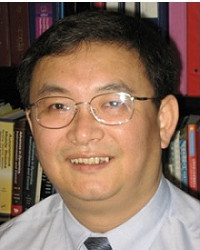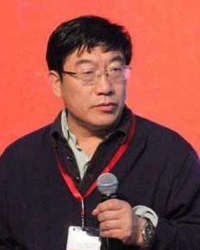Speech Title: Research on Control Systems with Hysteresis Abstract: Hysteresis nonlinearities are very common in industrial control systems. For decades, the existence of such nonlinearities have provided one of the most difficult challenges to control design engineers since the entire Laplace domain and most state space control design techniques were developed exclusively for differentiable linear or nonlinear systems. Hence, the existence of hysteresis nonlinearities in actuators and systems were neglected and the controllers were designed based on the nominal smooth systems. When the systems are considered with non-differentiable nonlinearities, these methods encountered substantial difficulties in the analysis, model fitting and control design stages. The development of techniques for the identification of such nonlinearities in realistic industrial plants has emerged as a significant problem in itself. Through several typical control systems, this presentation is intended to raise awareness of modeling and control challenges for the problems. Biography: Dr. Chun-Yi Su is currently a Professor and holder of Concordia University Research Chair’s position. His research covers control theory and its applications to various mechanical systems, with a focus on control of systems involving hysteresis nonlinearities. He is the author or co-author of over 200 journal publications. He has been identified as 2019 and 2020 Highly Cited Researchers from the Web of Science Group. Dr. Su has served as Associate Editor for several journals, including IEEE Transactions on Automatic Control, IEEE Transactions on Control Systems Technology, IEEE Transactions on Cybernetics. He is a Distinguished Lecturer of IEEE RA Society. He served for many conferences as an Organizing Committee Member, including the General Chairs and Program Chairs. |
Speech Title: Biological Optical AI and Bionic Optical AI Abstract: I first found this inverted retina structure of human and vertebrates is biological optical AI, which is consisted of optical fiber couplers and saturable absorbers. In this paper, I study the strong fiber coupling effects among seven identical human foveal cones. I shall discuss advances of biological optical AI in four areas: optical, electrical circuit, modulation format, and coding. I shall discuss bionic applications of optical AI as well. Biography: Professor Anhui Liang held important positions in several companies and universities, e.g. Deputy Director of University Academic Committee, Nanjing University of Posts and Telecommunications; Chief Scientist, National Key Lab of Optical Communication Technology and Network, FiberHome Technologies (i.e. WRI); Tyco Submarine Systems etc. He has published more than 100 journal papers and invited talks etc. in international conferences! He helped to organize many important conferences as general chairs, technical program chairs, or session chairs! He has made breakthrough in answering 5 of 125 important unresolved questions in Science journal, including: (1). He first discovered two new equations which are more accurate than the Heisenberg’s Uncertainty Principle. The equations can answer the relationship between quantum uncertainty and non-localization. (2).He first proposed the biological foundation of consciousness should include at least bio-transistors, bio clock recovery unit, and bio modulation formats etc. (3). He first discovered there are biological transistors on human and vertebrate retinas and in animal brains. (4). He first proposed natural chromosomes are optical fiber and fiber couplers! Honors and Awards: China Overseas Chinese Contribution Award recipient (2014); Year Person of “Science Chinese”(2015);. He has been widely reported by many popular news and TV. |
ICRAE 2021 Plenary Speakers
More info. will come soon...

 Prof. Chun-Yi Su, Concordia University, Canada
Prof. Chun-Yi Su, Concordia University, Canada Prof. Anhui Liang, Shandong University of Science and Technology, China
Prof. Anhui Liang, Shandong University of Science and Technology, China